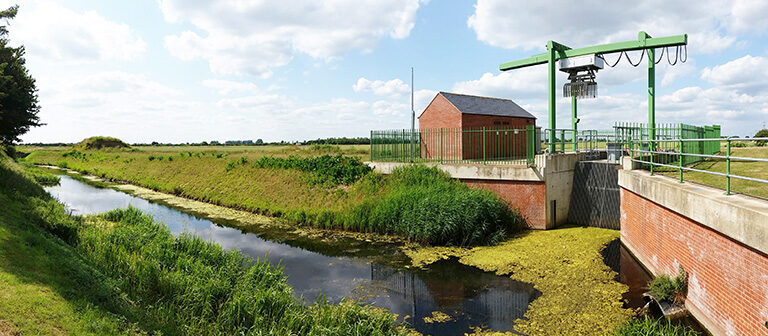Flood Defence misses out on energy support

The government is scaling back its energy support scheme from April to focus on heavy energy-using sectors. That currently does not include the flood and water management sector, something that ADA believes will further compound rising costs for flood risk management authorities.
Responding to the Government’s announcement of the new Energy Bills Discount Scheme, Innes Thomson, Chief Executive of ADA ( the Association of Drainage Authorities ), said: “We remain deeply concerned about the risk of heightened energy costs to those managing and maintaining our country’s vital flood defences.”
“While it is good that the Government will continue to help some parts of the public sector and business to keep their energy bills lower and provided some certainty for the next 12 months, it is disappointing to see that flood and water management has not made it on to the list of sectors eligible for the ETII scheme, which would have qualified public bodies such as internal drainage boards (IDBs) and the Environment Agency for additional support from April 2023.”
To qualify as an Energy and Trade Intensive Industries (“ETII”) sector, a business had to be above the 80th percentile for energy intensity (i.e., fall in the top 20% of sectors by energy intensity across the UK), and the 60th percentile for trade intensity (i.e., fall in the top 40% of sectors by trade intensity across the UK).
Keeping the pumps running
One of the most energy intensive activities undertaken by flood risk management authorities is pumping water. The majority of the 600 pumping stations operated by IDBs across lowland England run on electricity, as do the 360 pumping stations run by the Environment Agency.
All these pumps are essential assets for managing water levels that keep our country running, and our people and environment protected, especially when weather conditions are at their worst. Too often unbeknown to the general public, these pumps are working hard to keep their feet dry when we are at greatest risk from floods. To reduce the impacts of flooding, these pumps lift water up and out of lowland areas, such as The Fens, into rivers or out to sea, diverting floodwaters to protect people, properties, and the environment. In drought too they move water to supplement supplies elsewhere so that domestic consumers, farmers and industry continue to have the water they need, whilst also supporting the environment and protecting habitats.
The Environment Agency has calculated that that their own pumping activities alone account for approximately 54 gigawatt hours of electricity consumption annually. That is the equivalent to around 18,000 average UK households. Owing to their number and lowland functions, electricity consumption is substantially greater for IDB pumping stations.
ADA appreciates that there are cost pressures across local government, but IDBs’ compact size, limited reserves, and important flood risk management role, all restrict the ability to absorb these increases alone without cutting back on essential operations, maintenance, and future investment needed to adapt to the demands of climate change. ADA will continue to closely liaise with Defra towards finding a workable solution.
Archive
- March 2025
- February 2025
- January 2025
- December 2024
- November 2024
- October 2024
- September 2024
- August 2024
- July 2024
- June 2024
- May 2024
- April 2024
- March 2024
- January 2024
- December 2023
- November 2023
- October 2023
- September 2023
- August 2023
- July 2023
- June 2023
- May 2023
- April 2023
- March 2023
- February 2023
- January 2023
- December 2022
- September 2022
- August 2022
- July 2022
- June 2022
- May 2022
- April 2022
- March 2022
- February 2022
- January 2022
- December 2021
- November 2021
- September 2021
- July 2021
- May 2021
- March 2021
- February 2021
- January 2021
- December 2020
- November 2020
- October 2020
- September 2020
- August 2020
- July 2020
- May 2020
- April 2020
- March 2020
- February 2020
- January 2020
- December 2019
- November 2019
- October 2019
- September 2019
- August 2019
- July 2019
- June 2019
- May 2019
- April 2019
- March 2019
- February 2019
- January 2019
- December 2018
- November 2018
- October 2018
- September 2018
- August 2018
- July 2018
- June 2018
- May 2018
- April 2018
- March 2018
- February 2018
- January 2018
- December 2017
- November 2017
- October 2017
- September 2017
- August 2017
- July 2017
- June 2017
- May 2017
- April 2017
- March 2017
- February 2017
- January 2017
- October 2016
- September 2016
- August 2016
- July 2016
- June 2016
- May 2016
- April 2016
- March 2016
- January 2016
